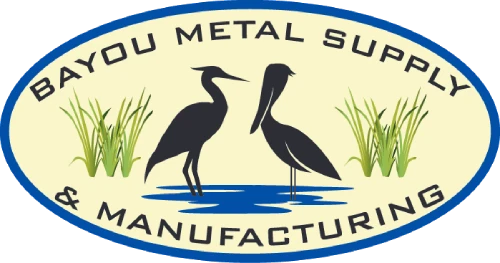Aluminum 5052-H32 is a non-heat-treatable alloy. It has good weldability and formability and offers excellent corrosion resistance. It has a smooth, shiny surface and is widely used for applications where strength and durability are critical.
Aluminum 6061-T6 is a heat-treatable alloy. It has good machinability and can, therefore, be cut and drilled easily to create different shapes. T6 offers excellent corrosion resistance and has a high strength-to-weight ratio, which makes it the ideal choice for structural applications where it is crucial to reduce weight without compromising strength.
Both aluminum 5052-H32 and 6061-T6 are suitable for custom metal fabrication. That said, aluminum 5052-H32 is a better choice for sheet metal fabrication; here’s why!
Formability
Aluminum 5052-H32 has excellent formability and can be easily bent and drawn to form complex, intricate shapes. Aluminum 6061-T6 has good formability as well, however, it is not as pliable as aluminum 5052-H32 and is, therefore, less suitable for applications that involve creating complex shapes and intricate patterns.Corrosion Resistance
Aluminum 5052-H32 offers excellent corrosion resistance and is commonly used in marine environments. Aluminum 6061-T6 is also corrosion resistant but is not as resistant as 5052 in extremely harsh environments.Fatigue Strength
Aluminum 5052-H32 has better fatigue strength (the maximum stress a material can withstand without cracking) than aluminum 6061-T6 and is, therefore, better suited for applications subjected to repeated stress cycles.Weldability
Aluminum 5052-H32 has excellent weldability and can be easily welded using common welding techniques. The tensile strength and hardness of the Heat-Affected Zone (HAZ) can be reduced due to changes in the alloy’s microstructure. However, 5052 is less sensitive to strength reduction compared to some other aluminum alloys. While aluminum 6061-T6 can be welded, the heat produced during welding can affect its strength in the heat-affected zone.Cost
Aluminum 5052-H32 is more cost-effectivethan other grades. Since it’s easier to fabricate, 5052-H32 can help reduce overall project cost. 6061-T6 is more expensive than 5052-H32 due to its superior strength and the complex method used to produce the alloy.Workability
Aluminum 5052-H32 is easy to work with, making it ideal for custom metal fabrication projects. You may need specialized tools and techniques to fabricate aluminum 6061-T6. As a result, fabrication costs can increase.Aluminum 5052-H32 vs. Aluminum 6061-T6: Applications
Aluminum 5052-H32 is commonly used for fuel tanks, automotive parts, and marine applications. 6061-T6 is commonly used in applications (such as aircraft structures) where a high strength-to-weight ratio is crucial. Bayou Metal Supply & Manufacturing offers a wide variety of aluminum products. We use advanced CNC routers to cut and bend metals into custom shapes. To learn more, call (985) 643-3340.Recent Post
- Why Is Stainless Steel The Most Preferred Material In Manufacturing Industrial Equipment And Tools?
- Aluminum Sheets Comparative Analysis: 5052 H32 vs 5052 H34
- Everything You Need To Know About Aluminum Alloy 5086 Sheet
- Join Bayou Metal Supply & Manufacturing at the 2024 International WorkBoat Show – Booth #2337
- What Makes T6 the Most Popular Temper for Aluminum 6061 Grade?


